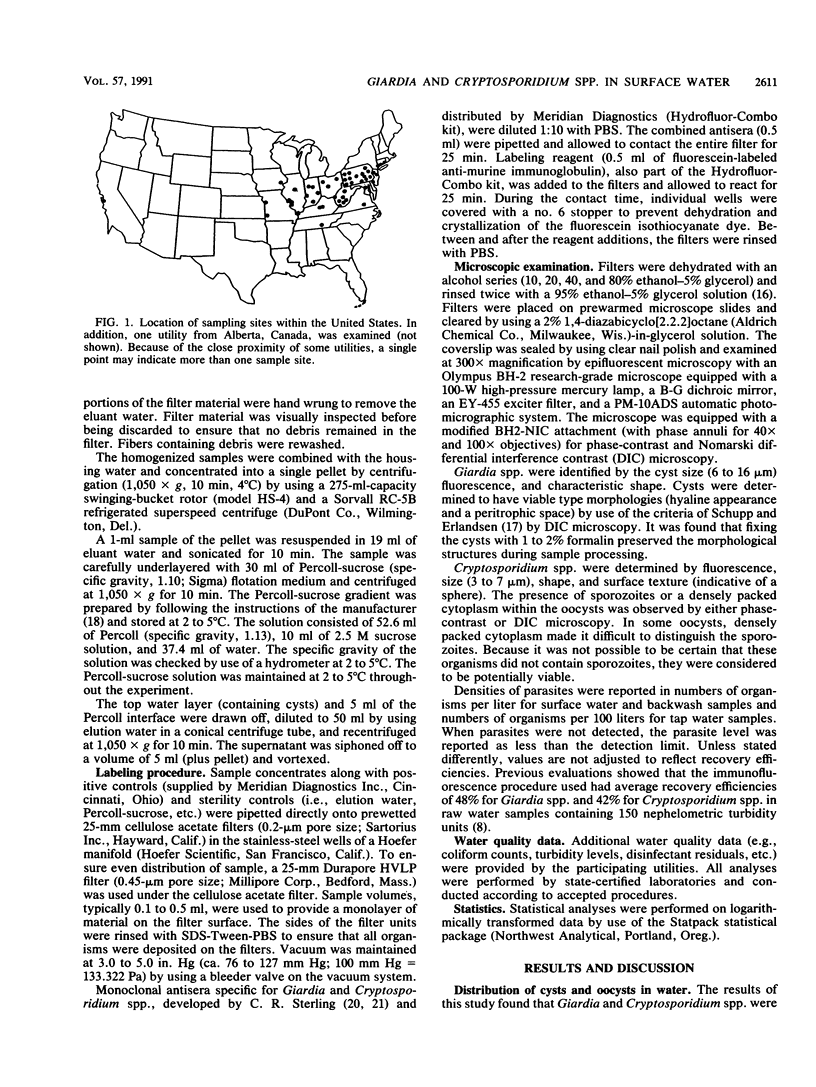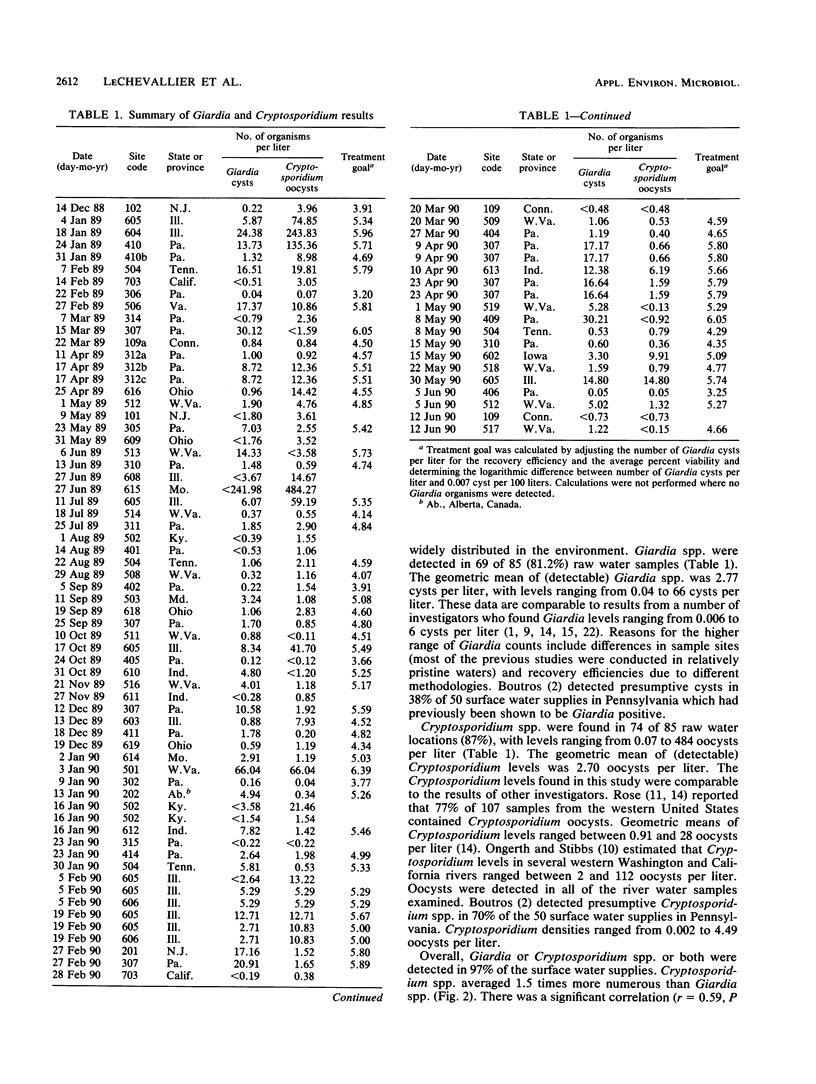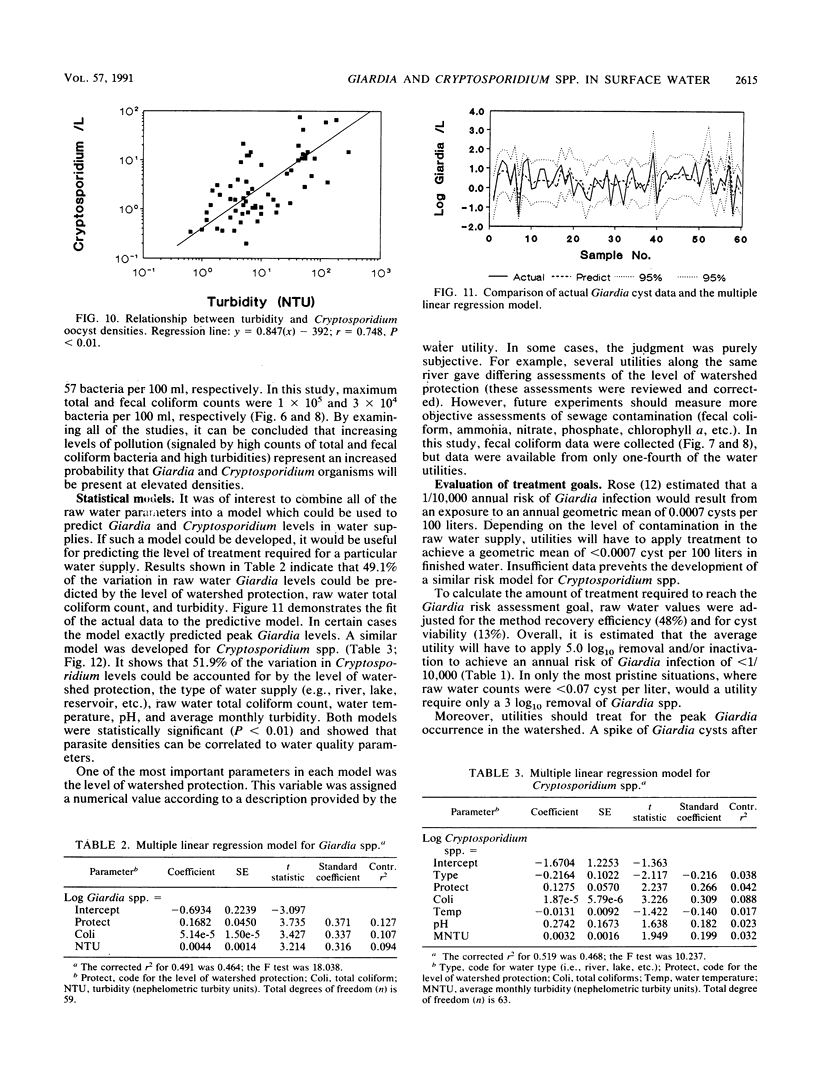Abstract
Giardia and Cryptosporidium levels were determined by using a combined immunofluorescence test for source waters of 66 surface water treatment plants in 14 states and 1 Canadian province. The results showed that cysts and oocysts were widely dispersed in the aquatic environment. Giardia spp. were detected in 81% of the raw water samples. Cryptosporidium spp. were found in 87% of the raw water locations. Overall, Giardia or Cryptosporidium spp. were detected in 97% of the raw water samples. Higher cyst and oocyst densities were associated with source waters receiving industrial or sewage effluents. Significant correlations were found between Giardia and Cryptosporidium densities and raw water quality parameters such as turbidity and total and fecal coliform levels. Statistical modeling suggests that cyst and oocyst densities could be predicted on the basis of watershed and water quality characteristics. The occurrence of high levels of Giardia cysts in raw water samples may require water utilities to apply treatment beyond that outlined in the Surface Water Treatment Rule of the U.S. Environmental Protection Agency.
Full text
PDF






Selected References
These references are in PubMed. This may not be the complete list of references from this article.
- D'Antonio R. G., Winn R. E., Taylor J. P., Gustafson T. L., Current W. L., Rhodes M. M., Gary G. W., Jr, Zajac R. A. A waterborne outbreak of cryptosporidiosis in normal hosts. Ann Intern Med. 1985 Dec;103(6 ):886–888. doi: 10.7326/0003-4819-103-6-886. [DOI] [PubMed] [Google Scholar]
- Hayes E. B., Matte T. D., O'Brien T. R., McKinley T. W., Logsdon G. S., Rose J. B., Ungar B. L., Word D. M., Pinsky P. F., Cummings M. L. Large community outbreak of cryptosporidiosis due to contamination of a filtered public water supply. N Engl J Med. 1989 May 25;320(21):1372–1376. doi: 10.1056/NEJM198905253202103. [DOI] [PubMed] [Google Scholar]
- Ongerth J. E., Stibbs H. H. Identification of Cryptosporidium oocysts in river water. Appl Environ Microbiol. 1987 Apr;53(4):672–676. doi: 10.1128/aem.53.4.672-676.1987. [DOI] [PMC free article] [PubMed] [Google Scholar]
- Sauch J. F. Use of immunofluorescence and phase-contrast microscopy for detection and identification of Giardia cysts in water samples. Appl Environ Microbiol. 1985 Dec;50(6):1434–1438. doi: 10.1128/aem.50.6.1434-1438.1985. [DOI] [PMC free article] [PubMed] [Google Scholar]
- Schupp D. G., Erlandsen S. L. Determination of Giardia muris cyst viability by differential interference contrast, phase, or brightfield microscopy. J Parasitol. 1987 Aug;73(4):723–729. [PubMed] [Google Scholar]
- Smith H. V., Patterson W. J., Hardie R., Greene L. A., Benton C., Tulloch W., Gilmour R. A., Girdwood R. W., Sharp J. C., Forbes G. I. An outbreak of waterborne cryptosporidiosis caused by post-treatment contamination. Epidemiol Infect. 1989 Dec;103(3):703–715. doi: 10.1017/s0950268800031101. [DOI] [PMC free article] [PubMed] [Google Scholar]


